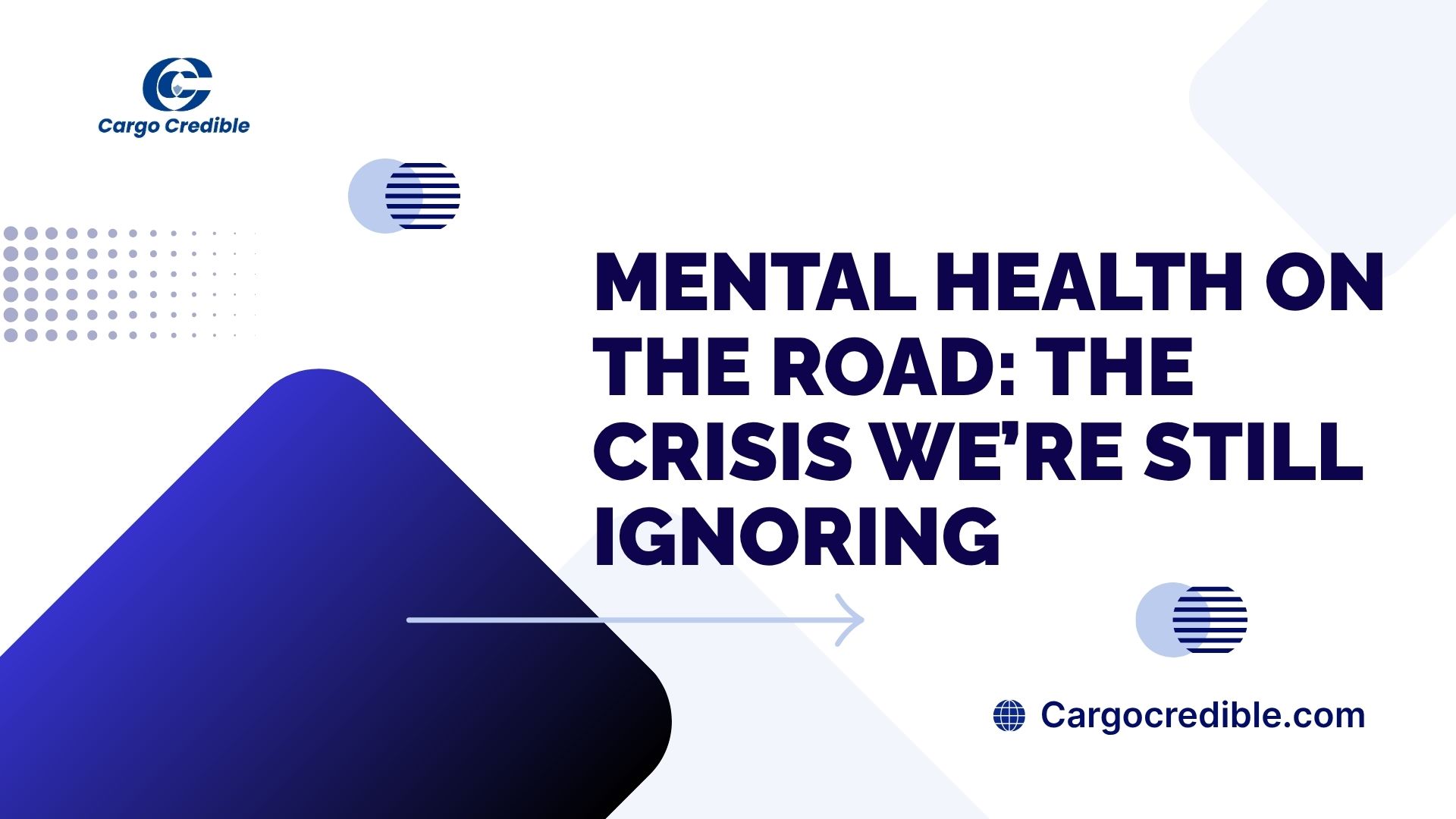Mental Health on the Road: The Crisis We’re Still Ignoring

The Open Road — And the Hidden Weight Behind the Wheel
When we think about life on the road, we often picture freedom—long highways, music on the radio, and the thrill of travel. But behind every delivery truck, every bus, every taxi, there’s a human being. Someone who spends hours, days, even weeks away from home. Someone who eats, sleeps, and lives inside their vehicle. And that person—the driver—is tired. Not just “I-need-a-nap” tired, but emotionally, mentally, and physically drained. We talk a lot about fuel prices, traffic jams, and bad roads, but not enough about something just as important: the mental health of the people who keep our world moving.
The Silent Struggle
Truck drivers sit alone for hours every day. They miss birthdays, dinners, and bedtime stories. They eat when they can, sleep when they find a safe spot, and push through storms, deadlines, and bad weather. Over time, this isn’t just tiring—it’s isolating. Isolation slowly turns into stress, anxiety, and sometimes depression. Many drivers describe feeling invisible. They deliver everything—food, medicine, clothes, fuel—yet few people ask how they’re doing. This invisibility feeds into a larger crisis we rarely talk about: mental health on the road.
Infrastructure Isn’t Just Roads—It’s People
When we talk about “infrastructure,” we often mean bridges, highways, and fueling stations. But mental health support is also infrastructure—the invisible kind. A cracked road slows trucks down. A cracked mind stops people entirely. Poor infrastructure—from bad roads to the lack of rest stops—adds enormous mental strain. Drivers can’t find safe places to sleep or clean bathrooms. Many skip meals or overwork to meet unrealistic schedules. Each missing piece in our transport system affects not just logistics—it affects lives.
Environment, Stress, and the Human Element
Drivers also face new environmental challenges—extreme heat, floods, storms, and unpredictable weather. These conditions don’t just damage vehicles or delay deliveries; they wear down people. Driving through 40°C heat without working air conditioning. Navigating flooded roads, fearing for safety and job security. This constant tension creates chronic stress that affects sleep, focus, mood, and even heart health. The environment and infrastructure are not separate from human wellbeing—they are connected like wheels on the same truck.
“I’m Fine”—The Two Most Dangerous Words
In trucking and logistics, there’s a culture of toughness. You keep going. You don’t complain. You deliver—no matter what. But this silence is dangerous. When drivers don’t feel safe to talk about mental strain, they hide it. And when pain is hidden, it grows. Many report burnout, loneliness, and emotional exhaustion—but they don’t always have someone to turn to. No counselor on the highway. No mental health hotline at the rest stop. Just another mile, another deadline, another day pretending everything’s fine.
Why This Hurts Everyone—Not Just Drivers
When drivers burn out, companies lose skilled workers.
When mental health declines, productivity drops.
When people quit from stress, the whole supply chain shakes.
Poor driver wellbeing leads to accidents, lower concentration, and higher turnover. That means more hiring costs, more training, more delays—and, ultimately, a weaker, less stable industry. So, the mental health crisis on the road isn’t just a “personal problem.” It’s a business problem, an infrastructure problem, and a human problem.
The Facts Behind the Crisis
Statistics reveal the depth of this crisis:
- Nearly 28% of truck drivers report suffering from loneliness on the road.
- About 22% have been diagnosed with depression.
- Around 21% experience chronic sleep disturbances.
- Anxiety, emotional difficulties, and other mental health issues affect significant portions of the driver population.
These mental health challenges impair focus, increase fatigue, and raise the risk of accidents—all threatening safety and operational stability.
The Road to Change: What We Can Do
This crisis doesn’t have to stay invisible. Here’s how we can start building better roads—not just for vehicles, but for people:
- Create Safe Rest Spaces: Clean, secure, well-lit rest areas with access to food, water, and bathrooms make a huge difference.
- Promote Open Conversations: Companies and managers must make mental health a normal topic—not a taboo one.
- Offer Mental Health Resources: Simple helplines, counseling services, or mental health days can save lives.
- Improve Schedules and Fairness: Realistic delivery timelines prevent exhaustion and accidents.
- Recognize and Reward Drivers: Sometimes, all it takes is appreciation—a “thank you” that reminds them they’re seen and valued.
- Invest in Wellness Programs: Physical fitness, nutrition guidance, and mindfulness can improve overall wellbeing.
- Leverage Telehealth: Mobile mental health support allows drivers private, convenient access to counselors even on the road.
The Human Element We Can’t Replace
Technology can automate routes. Infrastructure can improve. But nothing replaces the human behind the wheel—their strength, patience, their mind and dedication. Taking care of drivers’ mental health isn’t charity—it’s sustainability. A healthy driver means a safe road, a stable system, and a stronger future. We’ve built roads that reach every corner of the world. Now it’s time to build support systems that reach every driver. Mental health on the road is a crisis we cannot keep ignoring—because behind every shipment, there’s a story, a family, and a person who deserves to arrive safely, both physically and emotionally.
Comments (0)
- No comments yet.